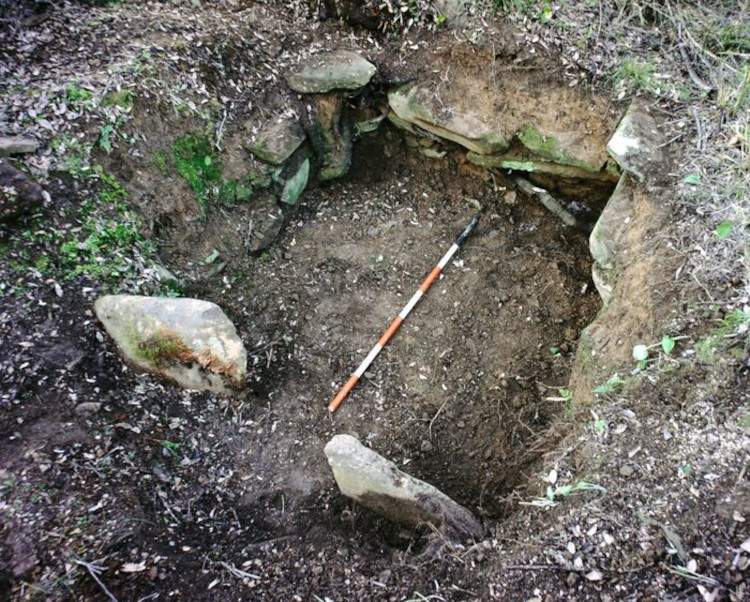In Vetulonia, at Poggio Valli in the province of Grosseto, an Etruscan burial ground was discovered a few days ago that did not appear on Doro Levi’s 1931 Archaeological Map of Vetulonia. Now the main reference map of necropolises belonging to the ancient Etruscan city of Vetulonia will have to be updated after this important find. This is in fact an area rich in Etruscan-Roman remains, which were brought to light in the 19th century thanks to the medical archaeologist Isidoro Falchi, and which over time were sometimes covered by forested areas and vegetation and in some cases overgrown by late medieval settlements, causing the disappearance of many funerary monuments.
The necropolis discovered “has remained unknown until now” and, as Mayor Elena Nappi and Heritage Councillor Walter Massetti state, “stands in line with the nearby Villanovan necropolis of the Colle Baroncio and Le Dupiane sites.”
“In the new necropolis, it is possible to identify a process of development of the architectural typology of Etruscan burials of the Orientalizing and Archaic ages (7th-6th centuries B.C.),” explains the scientific director of MuVet, the local museum, Simona Rafanelli, “leading from stone circle tombs enclosing a simple earthen pit, closed or open on a short side, located on the summit esplanade of the hillock, to tombs with a pit lined with rows of stone blocks under small mounds surrounded by a drum, up to the actual chamber tombs, inserted within high mounds with a drum and accessible through an access corridor.”
The news of the discovery was given by the city administration, via videoconference at the annual conference of the Archeological Institute of America: “We presented to insiders from all over the world who attended the famous American annual archeological meeting the new vetulonian necropolis deployed along Poggio Valli previously unknown.”
Nappi and Massetti recalled that in January 2018 it had been announced inside the National Etruscan Museum of Villa Giulia that work on the new archaeological map was being carried out in collaboration with the Soprintendenza Archeologia, Belle Arti e Paesaggio for the provinces of Siena, Grosseto and Arezzo and with the support of the local cultural archaeological association “Isidoro Falchi.” The Charter will see the light of day almost a hundred years after Doro Levi’s. “The new Map takes into account the changes that have taken place in the municipal territory over this long period and the substantial additions to be made, made necessary in light, on the one hand, of the disappearance of numerous funerary monuments no longer traceable on the ground and often covered by the dense cover of Mediterranean scrub vegetation and, on the ’other, by the discovery of new structures or even entire burial grounds distributed along the hillsides arranged around the one where the medieval and modern settlement of Vetulonia rises, which is superimposed on the Etruscan-Roman one brought to light by the physician-archaeologist Isidoro Falchi at the end of the 19th century,” the mayor and the councilor conclude.
 |
| Vetulonia, Etruscan necropolis unearthed that remained hitherto unknown |
Warning: the translation into English of the original Italian article was created using automatic tools. We undertake to review all articles, but we do not guarantee the total absence of inaccuracies in the translation due to the program. You can find the original by clicking on the ITA button. If you find any mistake,please contact us.